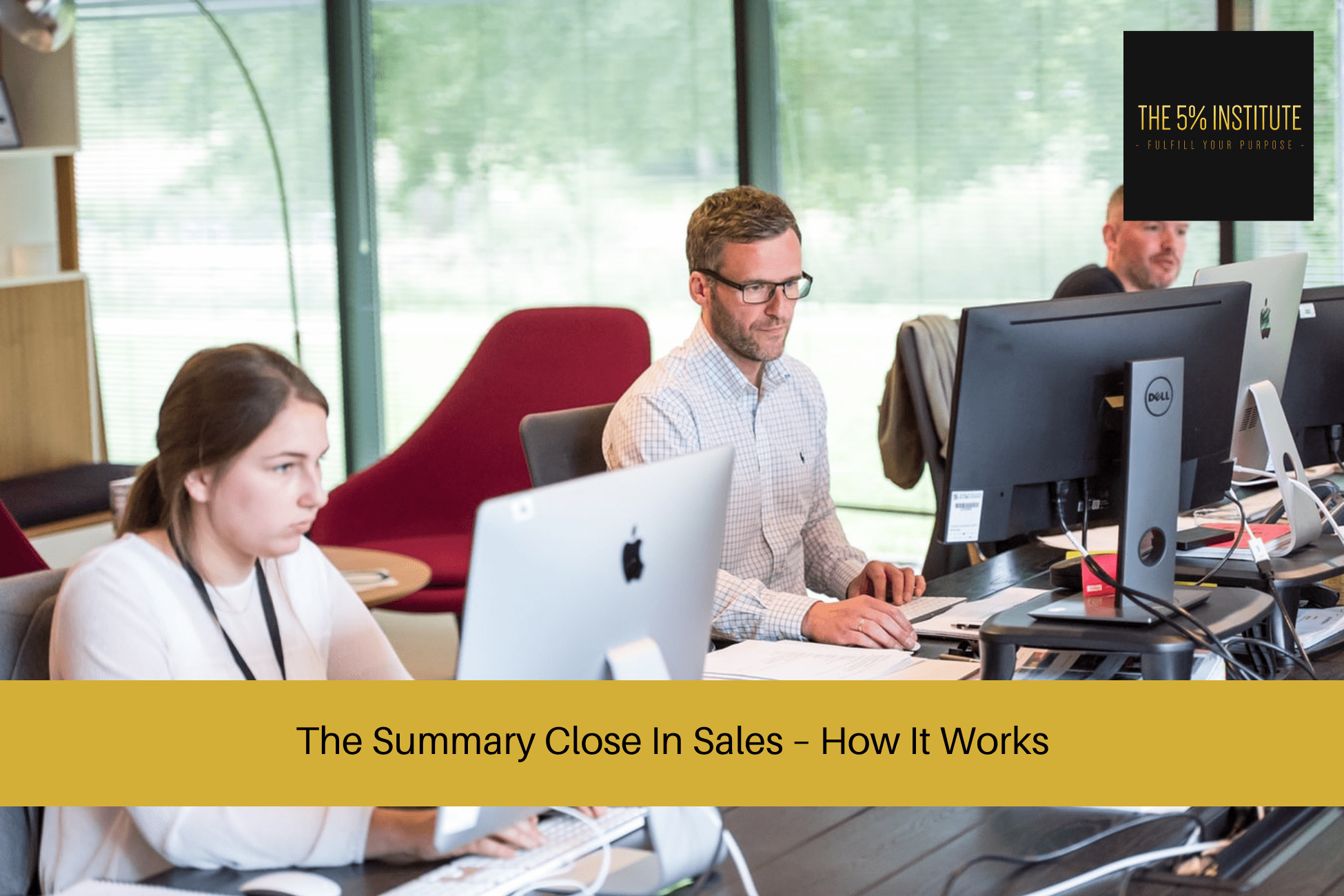
The Summary Close In Sales – How It Works
One of the most powerful sales closing techniques you can use, is something called the summary close.
So what exact is the summary close, and how does it work?
In this article, we’ll look at what the summary close is, why it works, as well as some of the key ingredients you need prior to using it.
The Summary Close In Sales – How It Works
What is The Summary Close?
Put simply, the summary close is summarising various things a potential client wants with the outcome they’re looking for, and then asking for the sale.
It involves repeating back what they are after, and then formulating the outcome they want by achieving what they want.
We’ll look at how to use it shortly.
Why Does The Summary Close Work Well?
The summary close is an excellent closing technique, because it doesn’t make assumptions on what they’re after.
You clearly narrate back what they’re looking to achieve, and then present and prescribe how you’ll help them get there.
Once you’ve done this, you simply ask for the sale.
It’s as easy as that.
In saying that – there are a number of key ingredients you need to follow prior to being able to use the summary close.
What You Need To Do Prior To Using A Summary Close
Prior to using the summary close, there are a number of key ingredients you need to include, as well as learn from your potential client. These are detailed below.
Pain
One of the things you’ll need to summarise when using a summary close, is the current pain and issues they’re currently dealing with.
One of the emotional drivers behind why people buy, is because they’re currently going through some kind of pain or discomfort that they’re trying to move away from.
It’s critical to learn what their pain points are, and then outlay this during your summary close.
Further reading: Pain Points & Sales – Your Ultimate Guide
Desire
The second emotional driver behind why people buy, is that they have a desire for a better state then their current situation.
The word desire could be branded in a few ways – these include a positive outcome, their end goals, or a future state.
When you’re summarising and using the summary close, you also need to outline the desire they’re hoping to get when they have a solution.
Related article: Trial Closes – A Step By Step Guide
Don’t Just Focus On Features And Benefits
One of the key errors people making when using the summary close, is they just talk about the features and benefits of their product, thinking that is a summary close.
It isn’t.
The reason the word ‘summary’ is in there, is because you need to summarise the issues they’re currently facing, the ideal solution and end goal they’d like to get to, and then how you can help get them there with your product or service.
People don’t buy features and benefits.
More importantly; people buy what it will mean when they own a solution.
Now that you know this, it’s important when articulating the summary close, that you expand on what it will mean when they have their pain points solved, as well as their end goal.
Related article: Selling Features & Benefits – Why This Is Costing You Sales
How Do You Find Out This Information?
So, how do you find out what you need to know to effectively use the summary close?
The way you do this, is by using a proven sales process.
A sales process is a step by step road map that guides you on exactly how to close the sale, from start to finish.
It includes various ingredients such as asking the right questions, finding pain, learning their desired outcomes, and of course – handling objections and asking for the sale.
To learn more about the sales process, click on the link directly below.
Further reading: The 10 Step Sales Process For Sales Success
An Example Of A Summary Close
Below is a simply example of how to use the summary close.
“So, Mr <insert name>; from what you’ve told me today – your issues are <insert pain>, <insert pain>, and <insert pain>.”
“This is affecting your business by <insert what these issues are doing and causing problems>.”
“You need to get to <insert desired outcome>, because by doing so, it’ll mean <insert meaning of achieving desired outcome>.”
“We can help you achieve <insert desired outcome>, by <explain exactly how your product or service will get them their desired outcome”.
“Would you like our help to help you achieve this?”
Final Thoughts
The summary close is one of our favourite closing techniques, because it’s simple, it’s consultative, and it doesn’t risk breaking rapport.
You simply reiterate what they want to achieve, and then ask if they’d like you to help get them there.
It’s easy.
In saying that, the summary close works best when you’ve already helped them sell themselves on the need for your services before you as the questions.
The way you do that, is by using a proven sales process.
Read on to learn exactly how.
Want To Close Consistently Without The Guesswork?
If you’re committed to increase your closing rate more consistently, then you should look into our online sales training program, The 5% Sales Blueprint.
Our online program is self-paced and is an affordable investment that’ll teach you exactly what to do to close more sales.
No more guess work – learn the exact process to win sales without being pushy.
Click the link below to learn how.



